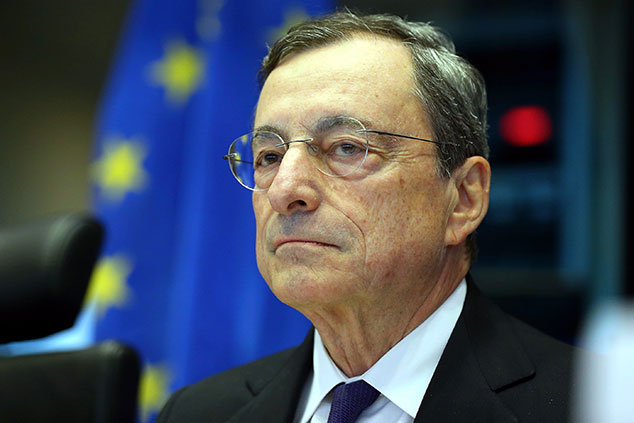
Unless you are a finance professional, it will not be the regulatory or rate-setting failures of central bankers. In the past decade, they have mostly been portrayed as the saviours of the global economy. Forced by the widespread political failure to provide fiscal stimulus, central bankers went into overdrive and tried to do everything themselves, showering the global economy with easy money and saving the world, and, in European Central Bank president Mario Draghi’s case, the euro.
Their use of quantitative easing might have merged fiscal and monetary policy together. (By raising asset prices artificially, QE has wealth distribution implications.) It might have looked more than a little political: the euro is a political project, so doing “whatever it takes” to save it is also political. And it might have some negative side effects but, the story goes, at least monetary policy did its job of preventing a global meltdown.
But now the problems they created are becoming obvious, as even Draghi noted in an interview published earlier this week. “The negative side effects as you move forward are more and more visible,” he said. Indeed they are.
Take negative interest rates, something that had almost no precedent when first Sweden, Switzerland and then the ECB deployed them after the 2008 crisis. The Swiss National Bank had charged de facto negative rates on non-resident deposits in the 1970s but that was it.
Negative interest rates undermine a country’s banks and, by extension, its entire economy. Their effect is visible in the share prices of European banks. The Euro Stoxx banks index is down near the 2012 lows it set during the eurozone crisis. By charging fees for deposits, negative rates turn assets into a kind of liability. That is already visible to some wealthy clients of European banks as well as any one with a business account. There is something shocking about actually seeing interest as a cost set against your cash.
Negative rates also destroy the stability of pension and insurance funds. At a conference in London this week, Peter Spiller of CG Asset Management provided a nasty little example of the damage they can do. Imagine, he said, that you want to have an inflation-adjusted £1 for your retirement in 2068 (49 years away). You could look to achieve this perhaps by investing in a gilt that matures then. Right now, you would need to put in £2.60 for every £1 you get out. Why? Because that is the compounding effect of investing for 49 years on the miserable minus 2.05% yield that the bond is offering investors today.
The effect may not be as visible as negative nominal rates on deposits, but when rates are negative in either real or nominal terms, cash is no longer helpful to anyone saving for retirement. The lower rates go, the more investors feel they must save.
There are less immediately obvious problems stemming from very loose monetary policy. The main one is the huge build up in public and private debt across the developed world (the highest ever in peacetime) and the low quality of much of that debt.
If we were seeing the end of QE and negative interest rates, all these very visible problems could be dismissed as probably temporary and, perhaps, even worth the pain. But we are not.
Draghi is leaving the ECB being hailed as a hero, but he is also leaving it with rates at minus 0.5% and a new round of QE bond buying under way. He isn’t alone: in the month of August, a quarter the G20 central banks lowered their policy rates. And the chat among central bankers is not about how to end it but instead how to make it even more extreme to address the next recession. Chairman Jay Powell recently asked whether the US Federal Reserve should be expanding its tool kit.
Interest rates can go lower. Outside Japan and the eurozone, most are still in positive territory. And central banks can go direct: merging monetary and fiscal policy with various versions of helicopter money. It might work.
But this time it might come back to bite. Most people didn’t notice the role of the central banks in the last financial crisis. Why would they? Old style monetary policy was important but it was also complicated and boring — and hence more or less invisible.
But negative rates are a different thing altogether. While you can explain the problems they create in complicated ways, there is no need to do so. Most people intuitively feel that negative interest is somehow unnatural. If negative rates cause the next crisis by distorting capital allocation and encouraging unmanageable levels of debt, central bankers will discover that the real danger is to them personally. The whole idea that they are politically independent good guys will come tumbling down.
Instead ordinary people will see them as dangerous creatives who set in motion an experiment they have no way of reversing or controlling. Just like the bankers in the early 2000s.